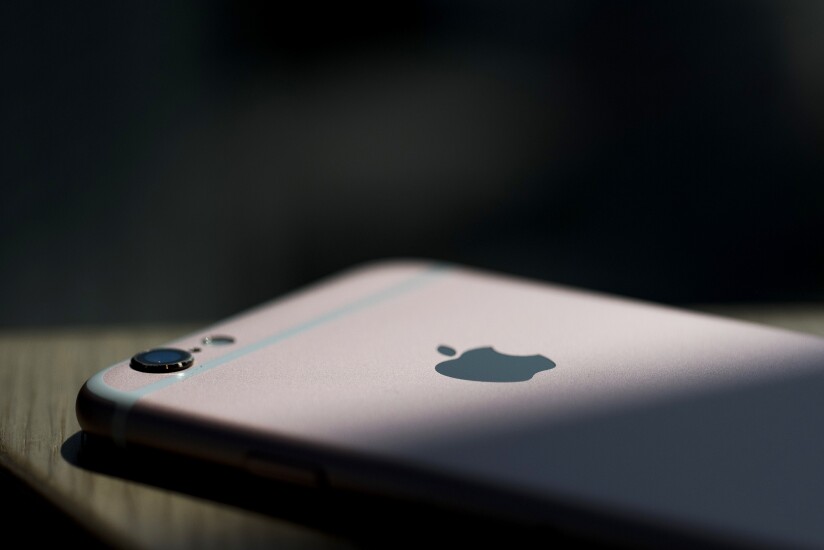

The Apple effect
The
But the same arguments were made about using fingerprint recognition — a process once considered reminiscent of being placed under arrest — and consumers grew to accept Apple's Touch ID and recognize it as a secure alternative to typing a PIN or password for purchases. Time will tell if Apple can win consumers over to facial recognition as well.

Samsung's false start
This feature was overshadowed by the dangerous battery issues that led Samsung to recall all Note 7 phones, but it could have set the stage for iris and facial recognition in Samsung Pay.
Galaxy Note 7 were able to use iris scanner to authenticate Samsung Payments as an option alongside Samsung’s existing fingerprint scanner, and iris authentication takes less than a second, Samsung said.
Samsung isn’t the first handset maker to deploy an iris scanner—Microsoft supported a similar feature on two of its Lumia models introduced in 2015—but this is the first time an iris-scanning camera was made available on a smartphone model sold in all global markets, Samsung said.

Mastercard's 'selfie pay'
The system was designed to automatically appear as an option at merchants that offer SecureCode, MasterCard's version of 3D Secure. Selfie pay is an alternative to the longtime process of prompting for a password during checkout to verify the cardholder's identity.
To implement this upgrade, only the issuer needs to make any changes, said Catherine Murchie, senior vice president for processing and enterprise security and network solutions at Mastercard Inc., in an interview at SourceMedia's Card Forum and Expo in Los Angeles last year.
"Any merchant that's SecureCode enabled today … they don't have to do anything different," nor do they need to know that the change is coming, she said. "Essentially what we're doing is replacing the password with a biometric."

Android Pay add-on?
The closest Google has come to facial recognition in the past was its Hands Free concept, which displayed a photo of the shopper to the cashier for verification. This concept resembled a model that PayPal and Square have separately experimented with, but didn't let the device itself play a role in verifying the user by his or her looks. It also relied on human judgment and, therefore, invited human error.
One of the main benefits of facial biometrics is the ability to authenticate someone passively from a distance, compared to other biometric capture such as fingerprint and iris scanning that may be perceived as more intrusive and even Orwellian. This can have benefits in terms of fraud reduction, but raises implications for the customer service environment.
Speed can be another factor. Google Hands Free was tested primarily in McDonald's and Papa John’s restaurants, where business margins are dependent on processing as many customers as possible during business hours. Facial biometrics could cut down on the time the cashier spends handling the payment, even initiating the transaction before the customer gets to the register.

Anti-money laundering effort
As the only Chinese region to permit gambling, Macau government officials said the island has become a haven for criminals and tax dodgers seeking to launder their cash, pushing down the value of the Renminbi and draining capital reserves.
Macau authorities have yet to give a timeline for the roll out of facial recognition measures, although the initial effort will concentrate on ATMs installed in casinos, according to a government statement issued in May.
"Customers with bank cards issued in Macau and other regions do not need the [facial recognition] procedure and can carry out withdrawals as usual," a government official stated. "Financial institutions will closely monitor the situation of customer use."

Finding new hacks
Two
The first was a breach of
The advantage of biometrics (what you are) over passwords and PINs (what you know) can be distilled to a single factor — what you know can be easily shared.
The HSBC and Samsung hacks are less like a stolen PIN and more like fraud committed by a friend or family member. These forms of fraud are already on the radar of many banks and merchants, which know that a relative is more likely to be able to answer challenge questions or guess passwords than a complete stranger would be.
This is a separate category of fraud, and it doesn't negate the value of challenge questions for the general population.





